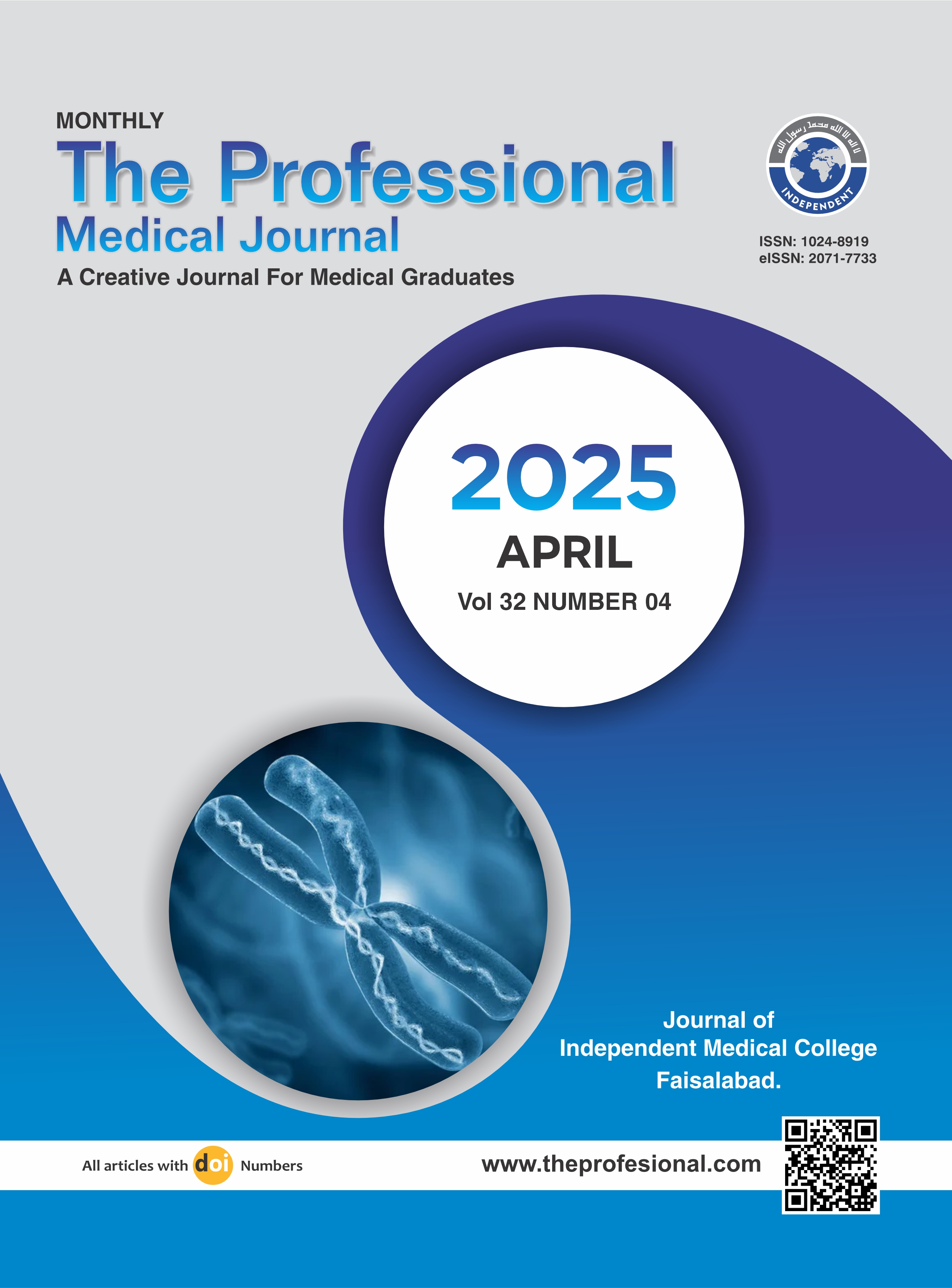Frequency and indications of elective tracheostomies in patients admitted at PICU.
DOI:
https://doi.org/10.29309/TPMJ/2025.32.04.8852Keywords:
Cardiopulmonary, Neurological Impairment, PRISM-III Score, Tracheostomy, Upper Airway ObstructionAbstract
Objective: To determine the frequency and indications of elective tracheostomies in patients admitted at pediatric intensive care unit (PICU) in a tertiary care hospital. Study Design: Cross-sectional study. Setting: The PICU of National Institute of Child Health, Karachi, Pakistan. Period: May 2024 to November 2024. Methods: A total of 62 children of any gender, aged 1 month to 14 years, and admitted to PICU were analyzed. Pre-designed study proforma was used to record study variables such as age, gender, PRISM-III score, admission type, disease categorization at admission. All patients admitting in PICU were closely monitored, and admitting consultant, on-board pediatric surgeon, intensivist and otorhinolaryngologist assessed the need to perform tracheostomy. Data were analyzed using IBM-SPSS Statistics, version 26.0. Results: In a total of 62 children, 35 (56.5%) were boys. The mean age of the children was 6.53±4.2 years. The mean PRISM-III score was 10.40±3.79. The most common disease categorization were neuromuscular diseases, and respiratory diseases, documented in 22 (35.5%), and 16 (25.8%) children, respectively. There were 11 (17.7%) children who underwent tracheostomy. Among 11 children undergoing tracheostomy, neurological impairments, upper airway obstruction, and cardiopulmonary indications were noted among 4 (36.4%), 4 (36.4%), and 3 (27.3%) children, respectively. The severity of illness, as per PRISM-III score, was significantly higher in children who underwent tracheostomy (p=0.023). Conclusion: The frequency of tracheostomy was 17.7% in children admitted in PICU. Patients requiring tracheostomy demonstrated significantly higher PRISM-III scores. Neurological impairments, upper airway obstruction, and cardiopulmonary complications were most common indications behind tracheostomy.
Downloads
Published
Issue
Section
License
Copyright (c) 2025 The Professional Medical Journal

This work is licensed under a Creative Commons Attribution-NonCommercial 4.0 International License.


